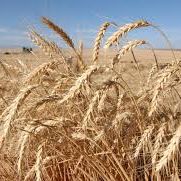SPECIAL FOCUS: IDENTIFICATION OF NEW WHEAT DISEASES RESISTANCE GENES AND BREEDING APPLICATION
ZHOU JingWei, YE BoWei, ZHANG PengFei, ZHANG YuQing, HAO Min, YIN YuRuo, YUAN Chan, LI ZhiKang, LI ShunDa, XIA XianChun, HE ZhongHu, ZHANG HongJun, LAN CaiXia
【Objective】Stripe rust, caused by Puccinia striiformis f. sp. tritici (Pst), significantly reduced wheat production worldwide. Breeding resistant wheat varieties is currently considered to be one of the most economical and effective ways to control this disease. Understanding the resistance level of Chinese and International Maize and Wheat Improvement Center (CIMMYT) wheat breeding materials and the distribution of known disease resistance genes will greatly helpful for discovering the new resistance resources and improving the utilization efficiency of disease resistance genes. 【Method】In the present study, we phenotyped 153 wheat breeding lines derived from China and CIMMYT at both seedling against prevalent Chinese Pst races CYR33 and CYR34. In 2018-2019, 2019-2020 and 2020-2021, using the Pst races CYR33 and CYR34 to identify the materials at the adult plant stages in Ezhou, Hubei. In addition, we used the gene-based or closely linked molecular markers of known stripe rust resistance genes Yr5, Yr9, Yr10, Yr15, Yr17, Yr18, Yr26, Yr29 and YrSP to genotype the whole set of wheat collections. 【Result】We found 10 lines immune against CYR33 at the seedling stage (IT: 0), including seven Chinese cultivars (Shannong 28, Luomai 163, Shimai 13, Zhongyi 6, Tanmai 98-2, Zhongmai 175, Taishan 21) and three CIMMYT lines (CIM-53, CIM-60 and CIM-71). However, only two cultivars, Tanmai 98-1 and Shannong 102, showed immune to CYR34 at the seedling stage. Based on the three years field tests, we found 64 lines showed highly resistance to stripe rust (final disease severity, FDS≤5%), including seven Chinese cultivars and 57 CIMMYT lines. The molecular marker analysis of known stripe rust resistance genes showed that there were 31, 23, 73, 2, 4, 50 and 2 lines carrying resistance genes Yr9, Yr10, Yr17, Yr18, Yr26, Yr29 and YrSP, respectively. None of any lines had Yr5 and Yr15. Based on the phenotype, only CIM-53 showed immune against two races at both seedling and adult plant stages (IT=0, FDS=0) and it might carry the known stripe rust resistance gene combination of Yr17+Yr29 based on the genotype. 【Conclusion】A total of 153 wheat collections from China and CIMMYT were showed adult plant resistance to the prevalent Pst races. Among these, Chinese wheat varieties mainly carry Yr9, Yr10 and Yr26, while CIMMYT wheat line mainly carry Yr17, Yr18 and Yr29, indicating that near-immunity resistance of CIMMYT wheat lines due to combinations of 1-2 moderate seedling resistance gene and 2-3 adult plant resistance genes resulting in durable resistance. Therefore, it is very urgent to expand the resistance sources and identify new resistance genes for pyramiding more genes biotechnology methods to develop new wheat varieties with durable rusts resistance and good agronomic traits. This plays an important role for controlling stripe rust in China by improving the resistance level of wheat variety overall.
